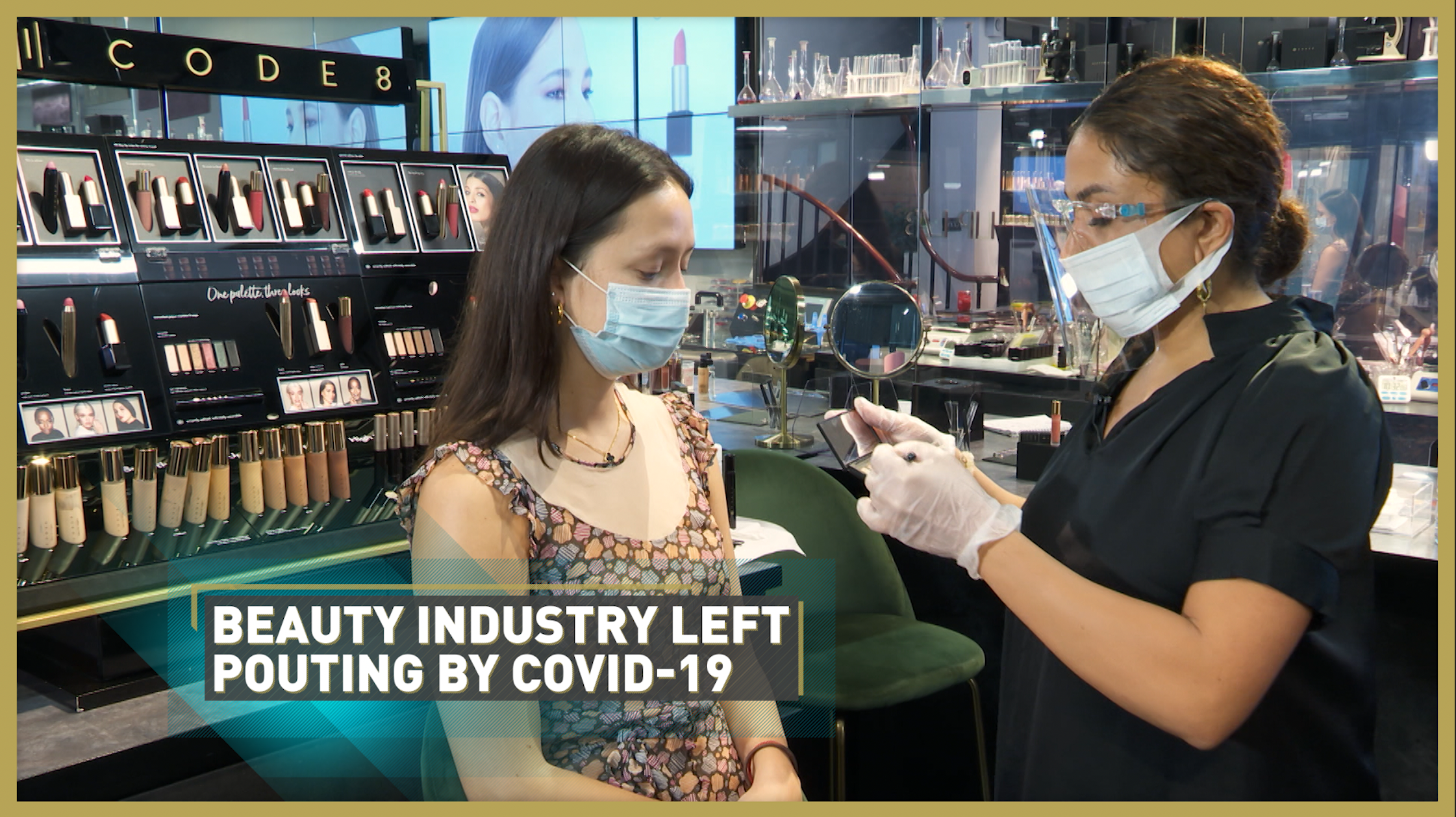02:35

Mask and visor on, behind a perspex screen, makeup artist Sasha Ghodstinat is mixing a bespoke lipstick on the back of her gloved hand. Blending your own unique lipstick is a signature service at Code8 Beauty.
It is points of difference like this that could be the secret to survival while the beauty industry has been left pouting by the coronavirus crisis.
"It's different now," said Sasha, head trainer at Code8 Beauty. "You can't go and try on mascara or eye shadow – before you'd go into a department store, makeup store, and dip your hands into eye shadow. It has completely changed now. You are not allowed to touch the display," she said.
COVID-19-safe protocols have made shopping in store for anything a rather different experience and makeup is no exception.
Sales of makeup at L'Oréal, the world's largest cosmetics company, have dropped "significantly" in recent months.
Estée Lauder, which owns Clinique, MAC and Bobbi Brown, said makeup sales nosedived by nearly two-thirds this year.
"The effects of COVID-19 had a larger impact on makeup, particularly foundation and lip [products]," said the brand in its latest financial results report.

The global beauty industry generates $500 billion in sales a year and accounts for millions of jobs. But Mckinsey Consulting says there has already been a drop of around 50 percent in peak sales compared with a year ago. Lipstick purchases have been especially low. And global revenue could fall by up to 30 percent in 2020.
"The makeup business has suffered a lot. Because stores are closed, people are not going outside, people are not going to work, going on dates – all the things you would like to put makeup on for," said Yamina Tsalamlal, associate analyst in the consumer division at consultants Global Data.
Home working and mask wearing are blotting out one economic theory: the "Lipstick Effect."
In previous downturns and financial crises, cosmetics sales bucked the trend – tending to speed up when the economy was squeezed as people treated themselves to affordable luxuries, such as makeup.
The former chairman of Estée Lauder, Leonard Lauder, called it the "Lipstick index." But the pandemic is kissing that goodbye.
So beauty brands are pivoting, using innovation plus cutting-edge technology to plump up their fortunes.
"Whether it is augmented reality, whether it is new regimes, whether it is an easier way of trialing physical products, brands need to keep innovating in ways to remain relevant to consumers," said Richard Haigh, managing director at Brand Finance.
"They also need to embrace different changes in trends," he added.
Those trends include lotions and potions – lipstick and blush might be out, but skincare is in.
"I think what we need now is a new term for lipstick index," said Tsalamlal. "Maybe the wellbeing, or the wellness index, as a way to better understand how people are spending their money in terms of making themselves feel good, so maybe it is lipstick, maybe it is moisturiser or skincare," she added.
Perhaps consumer spending on that could rejuvenate the beauty industry.